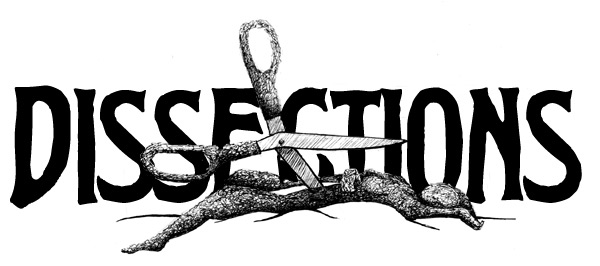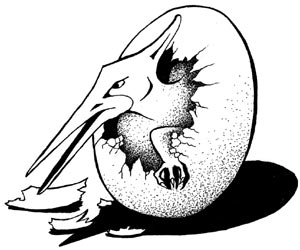[an error occurred while processing this directive]



Review of Scare Tactics: Supernatural Fiction by American Women
by Jeffrey Andrew Weinstock
(New York: Fordham University Press, 2008)
ISBN 978-0-2985-7
by Gina Wisker
Hidden histories of women Gothic writers are revealed in Jeffrey Weinstock’s Scare Tactics (New York: Fordham University Press, 2008), even as their own tales, post civil war, testify to a hitherto hardly acknowledged feminist consciousness and experience of reaction against oppression, silencing and marginalisation within conventional society.
This is a very sound, scholarly text which is the fruit of much research establishing the supernatural tradition and women’s often ignored and historically hidden contribution to it in the US. Jeffrey Weinstock reveals a contextualised, consistently robust line of development and wide range of writers. Supernatural fiction by women 1850-1930 is definitely alive and kicking.
If you have read any tales by Edith Wharton or Charlotte Perkins Gilman, for instance, and marvelled at both their Gothic, ironic and supernatural qualities and their often somewhat disguised critique of women’s constrained position and the illegitimacy of male power, then your suspicions that there might be more such fictions hidden between gentility and realism would be well confirmed on reading this book. Weinstock exposes a wealth of little known tales while reading and re reading a similar wealth of better known tales. The relationship between ghost stories and the rise of American capitalism is revealed throughout, making an essential cultural and creative link: “In these ghost stories, the force that produces ghosts – and sometimes renders the living ghostly – is the development of American capitalism and the willingness to make one’s fortune through the exploitation of others” (p. 81).
Starting with the little known “The Premonition” by Lurana W. Sheldon in Godey’s Lady’s Magazine in 1896, Weinstock details a model tale in which a bride dreams of warnings from women previously murdered by her artist husband in his desire for control in an artistic tableau. “The Premonition” offers a model for themes explored in the book. “The idea of a ghostly sisterhood of dead women that warns living women about the dangers of marriage and patriarchy eloquently condenses the primary theme of this study: the use by American women of supernatural conventions as a form of cultural critique” (pp. 1-2).
He goes on to make a sound case for a sizable body of fiction produced from 1850-1930, which could be termed “female fiction” in the US in parallel to similar work in the UK, causing a reconsideration of how the American Gothic tradition has developed in an international context.
Ghost stories were very popular and enhanced their readership largely in Christmas editions and gift books, particularly during the Darwinian/Victorian “spiritual crisis”. Much that cannot be spoken of appears in tales through the return of the repressed figures of ghosts. Weinstock explores ghostly spaces, familial ghosts and the unpicking and exposing of the myths of happy marriages and the demands of maternity. So, in an era which idealised the angel in the house, conventional marriage and domesticity, ghostly desire leaks out, including that of the hidden desire of lesbianism.
A major line of argument appears on p. 8, built on Elaine Showalter’s term “bitextual”, which indicates a “double-voiced discourse influenced by both the dominant masculine literary tradition and the muted feminine one” (p. xvi in A Literature of Their Own). Jeffrey Weinstock notes that “ghost stories can function as double-voiced or ‘bitextual’ tools to explain and express anxieties and unacceptable desires in disguised form” (p. 8). This builds on Terry Castle’s suggestion that post Ann Radcliffe’s The Mystery of Udolpho there was a “shift towards the phantasmatic” (Castle, Female Thermometer, p. 125), when “what was once considered real, the supernatural, has become unreal, and what was once considered unreal, the imagery of the mind, has become the real” (p. 9). Ghosts become internalised products of the mind. The Victorian supernatural emerges, he claims, from the moment in which “the finality of death is denied” (p. 10).
Weinstock establishes the development of female Gothic in the context of female readership, for example, that of the work of Dickens, and of women’s quest for spiritualism (though feminism is claimed here a little earlier than its inception). The gap he explores and fills is a crucial one in American female Gothic, which critics tend to read as either conservative, or revolutionary in its critiques of post marital constraints. Female Gothic can be seen as subversive, challenging and transgressive, and the book takes us through a variety of critical appraisals: Moers, Modleski, Gilbert and Gubar, where that of Leeuwen is the most vigorous about their radical nature.
That the ghost story is a “natural” way of exploring female disempowerment is a regular assertion. These were marketable fictions and they engage with race, class, etc.
The book looks at a number of tropes in the American Victorian Female Gothic, highlighting its sensational nature, dealing with “murder, incest, bigamy, suicide, child abuse, rape and revenge from beyond the grave” (p. 26) in the chapter on Spofford, Beecher Stowe, Hoyt and Wharton, which talks “… explicitly about violence” and murder, abuse and confinement. Beginning with Sir Rohan’s Ghost by Harriet Prescott Spofford, and moving through a mixture of the well known and the lesser known writers and their works, Weinstock notes interesting ways in which Spofford revises the Romance and Gothic plot with her inventive narrative point of view and time management.
Several of the tales discussed have radical elements which, by undermining the meaning of familiar tropes and upsetting familiar trajectories, call into question the social values on which they are built and which they reinforce in more conventional tales. Women use ghost stories to depict known terrors all too prevalent in the every day – deaths, incest, betrayal, child abuse and murder. For example, Anna M. Hoyt’s The Ghost of Little Jacques and other stories testify to recognisable power distributions in patriarchal American society: men’s failure to participate in child rearing, and murder. “Hoyt’s story shows that, for women, the status quo could be as terrifying, if not more so, than any supernatural manifestation” (p. 45).
Edith Wharton’s “Kerfol” is explored at length. This famous tale concerns a visit to a deserted mansion, encounters with a pack of ghostly dogs and the punishment via confinement of Anne, who allegedly killed her husband (but claimed it was done by the dogs). Wharton’s unreliable narrator mimics the gender oppression, so readers are not aware of it. However, Weinstock reveals it. And so we see an example of ways in which narrative voices in well known texts, by mimicking the ignorance, misrepresentation and silencing experienced by many women, can be shown to undermine such silencing for the more perceptive reader.
The third chapter considers the gendering of space and an exploration of the social structures that give rise to and perpetuate cultural inequalities “consigning women to a spectral half-life of muteness and dependence” (p. 55).
In “Queer Haunting Spaces” Weinstock looks at Madeline Yale Wynne and Elia Wilkinson Peattie. Here, “familiar domestic interiors in the Gothic transform into confining sites of mental and psychological peril” (p. 56), where spaces – a Western ranching home and a New England farmhouse – become haunting spaces, rendering domestic spaces uncanny. As Avery Gordon notes in Ghostly Matters, “to write stories about how that which is invisible, that which is marginal, and that which is excluded still manages, nonetheless, to produce material effects” (p. 17).
The tales and spaces are often very revealing. For instance, Weinstock looks at the desire to transform “anxious” into “felicitous” spaces. In their haunting of spaces and places women’s ghost stories are compared and contrasted with those of Herman Melville, Henry James and others to identify common themes and different treatments.
Gender, power, the rise of capitalism, the suppression of women’s views, desire and voices are all ghostly revelations in these tales. So, too, is lesbian desire, though the germ is recognised as predating its actual acknowledgement. Weinstock reveals tales of where the “strategy of ghosting, when co-opted by lesbian writers, is turned on its head”, a theme explored through a variety of texts, building on the case Terry Castle initially established in The Apparitional Lesbian, developing themes such as that of “passionate beckoning” in the work of Cooke, Brown, Ward and Hull. The ignorance of lesbian longing and the erotic on the part of the living is revealed in Elizabeth Stuart Phelps Ward’s 1873 short story “Since I Died”. In the story, a Boston marriage is ghosted, a story of “passionate beckoning”, which queries recognisable sexual configurations and rejects what Adrienne Rich has famously described as “compulsory heterosexuality”, so blowing open the camouflage of respectability and giving voice to lesbian desire.
This is a very well written book. Its scholarship is excellent and
it both fills a gap and leaves us asking more questions about what’s
hidden, what’s coded, what’s secretly influential in women’s
ghost stories of the era. If you are interested in ghost stories and
the way in which they vehicle social critique, and if you are teaching
tales of the supernatural, of the Gothic or of horror, this book is
essential reading.